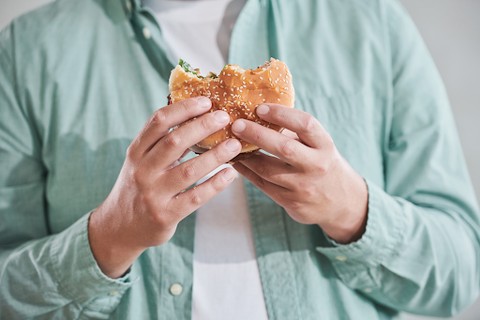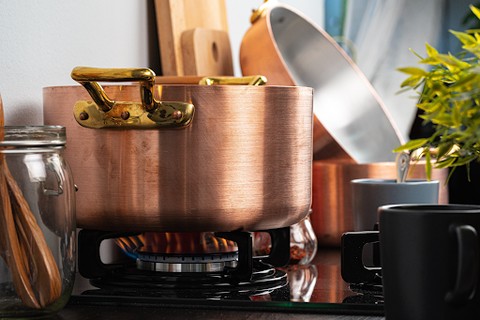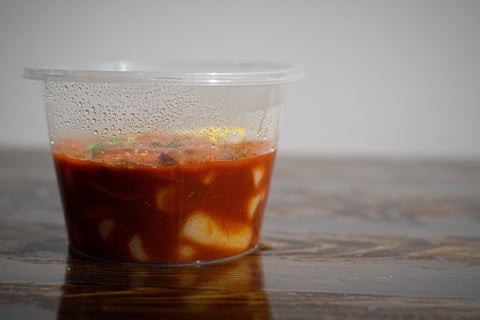Keeping hot food hot while traveling in Vietnam can be tricky, but it’s definitely achievable. SIXT.VN understands the importance of enjoying a warm meal on your journey, especially when exploring the beautiful landscapes and vibrant cities of Vietnam. We offer convenient travel solutions to ensure your food stays hot, making your travel experience more enjoyable. With proper planning and the right tools, you can enjoy delicious, warm meals wherever your Vietnamese adventure takes you.
1. Why is Keeping Food Hot Important During Travel?
Keeping food hot when you travel is essential for taste, digestion, and safety. Maintaining the correct temperature ensures your meals are enjoyable, supports your digestive system, and minimizes the risk of bacterial contamination.
1.1. Enhanced Taste and Enjoyment
Certain dishes, like pho or banh mi, are best enjoyed hot. Cold or lukewarm food can significantly diminish the flavor and overall enjoyment of these meals. Maintaining the temperature allows you to savor the authentic taste of Vietnamese cuisine.
1.2. Improved Digestion
Warm food aids digestion by making it easier for your body to break down nutrients. According to research from the National Institutes of Health in 2019, warm foods are gentler on the digestive system. Cold food can shock the system, requiring more energy to process, potentially leading to discomfort.
1.3. Food Safety
Keeping food at a safe temperature prevents the growth of harmful bacteria. The World Health Organization states that food should be kept above 60°C (140°F) to inhibit bacterial growth. This minimizes the risk of foodborne illnesses, ensuring a healthier travel experience.
 Delicious Pho Vietnam Soup
Delicious Pho Vietnam Soup
2. What Are the Best Methods to Keep Food Hot While Traveling?
There are several reliable methods to keep your food hot while traveling, each with its advantages. These include using insulated containers, thermal bags, aluminum foil, and even creative solutions like hot water bottles.
2.1. Insulated Containers
Insulated containers, like thermoses, are designed with vacuum insulation to maintain temperature for extended periods. These are ideal for soups, stews, and other liquid-based meals.
2.2. Thermal Bags
Thermal bags provide an extra layer of insulation, keeping food hot for several hours. They are lightweight and easy to carry, perfect for day trips or picnics.
2.3. Aluminum Foil and Towels
Wrapping food in aluminum foil and then a towel provides basic insulation. The foil reflects heat back into the food, while the towel adds an extra layer of protection.
 Close up of aluminum foil
Close up of aluminum foil
2.4. Hot Water Bottles
Placing a hot water bottle next to your food in a thermal bag can help maintain the temperature. The hot water bottle acts as a heat source, keeping your meal warm.
3. How to Keep Food Hot Without Electricity?
Keeping food hot without electricity requires simple yet effective methods such as using insulated containers, thermal bags, hot water bottles, and layering techniques. These methods rely on trapping and retaining heat.
3.1. High-Quality Insulated Containers
Invest in high-quality insulated containers to keep your food hot for hours. These containers are designed to minimize heat loss, ensuring your meal stays warm.
3.2. Thermal Bags with Heat Packs
Use thermal bags with added heat packs to boost heat retention. Heat packs provide a consistent source of warmth, prolonging the time your food stays hot.
3.3. Layering with Aluminum Foil and Towels
Wrap your food in aluminum foil and then a towel for added insulation. The foil reflects heat, while the towel provides an extra layer of protection.
 Man in yellow t-shirt carrying thermal bag
Man in yellow t-shirt carrying thermal bag
3.4. Improvised Insulation with Newspaper or Cardboard
In a pinch, newspaper or cardboard can provide insulation. Wrap your food in several layers to help retain heat.
4. What Role Does a Cooler Play in Keeping Food Hot?
While coolers are primarily used for keeping food cold, they can also be effective in keeping food hot due to their insulation properties.
4.1. Insulation Properties of Coolers
Coolers are designed to maintain a consistent internal temperature. This insulation works both ways, keeping cold in and heat out, or vice versa.
4.2. Using Insulated Liners and Heat Packs
To optimize a cooler for hot food, use insulated liners and heat packs. These additions enhance the cooler’s ability to retain heat.
4.3. Preheating the Cooler
Preheating the cooler with hot water before placing the food inside can help maintain the temperature longer. This creates a warm environment that minimizes heat loss from the food.
5. What Are Some Creative Insulation Methods for Keeping Food Hot?
Creative insulation methods can be surprisingly effective in keeping food hot. These include using warm clothing, electric blankets, and even the car’s trunk.
5.1. Wrapping Food in Warm Clothing
Warm clothing acts as an insulator, trapping heat and keeping your food warm. Wrap your food in layers of clothing for added insulation.
5.2. Using an Electric Blanket
An electric blanket can provide consistent warmth, especially during car travel. Wrap your food in the blanket and plug it into the car’s power socket.
5.3. Storing Food in the Car Trunk
On a warm day, the car trunk can act as a natural insulator. The enclosed space helps retain heat, keeping your food warm.
 Woman sitting in car looking out window
Woman sitting in car looking out window
5.4. Warming with Hot Stones
Heat smooth stones in boiling water, dry them thoroughly, and wrap them in cloth before placing them near the food. The stones act as a heat source, keeping the food warm.
6. How Does Preheating Food Help Maintain Temperature?
Preheating your food just before packing it can significantly extend how long it stays hot. This ensures that the food starts at a higher temperature, reducing the rate of heat loss.
6.1. The Importance of Initial Temperature
Starting with a higher initial temperature means the food will take longer to cool down. This is especially useful for long journeys.
6.2. Reheating Methods
Use a microwave or stovetop to reheat your food thoroughly before packing. Ensure the food is piping hot to maximize heat retention.
6.3. Immediate Packing After Reheating
Pack the food immediately after reheating to trap the heat. Use insulated containers or thermal bags to maintain the temperature.
 Pots on stove heating food
Pots on stove heating food
7. What Type of Containers Are Best for Keeping Food Hot?
Choosing the right containers is crucial for keeping food hot. Insulated stainless steel containers, vacuum-sealed containers, and microwave-safe plastic containers each offer unique benefits.
7.1. Insulated Stainless Steel Containers
Insulated stainless steel containers are excellent for maintaining temperature due to their double-walled vacuum insulation. They are durable and keep food hot for hours.
7.2. Vacuum-Sealed Containers
Vacuum-sealed containers prevent heat loss by creating an airtight seal. This helps to keep the food hot and prevents steam from escaping.
7.3. Microwave-Safe Plastic Containers
Microwave-safe plastic containers are convenient for reheating food before packing. Ensure they are specifically labeled as microwave-safe to avoid melting or leaching chemicals.
 Tteokbokki takeout food container
Tteokbokki takeout food container
8. How to Prevent Heat Loss When Packing Hot Food?
Preventing heat loss is key to keeping food hot. This involves using proper sealing techniques, avoiding mixing hot and cold foods, and minimizing the time the container is open.
8.1. Sealing Containers Properly
Ensure containers are tightly sealed to prevent heat from escaping. Check that lids are securely fastened and airtight.
8.2. Avoiding Mixing Hot and Cold Foods
Keep hot and cold foods separate to prevent temperature transfer. Mixing them can cause the hot food to cool down and the cold food to warm up.
8.3. Minimizing Opening Time
Avoid opening the container unnecessarily, as this allows heat to escape. Each time you open it, the temperature drops, reducing the overall time the food stays hot.
 Clean food diet
Clean food diet
9. What Are Some Additional Tips for Keeping Food Hot While Traveling in Vietnam?
When traveling in Vietnam, you can enhance your food-warming strategy by utilizing local resources and understanding the climate.
9.1. Utilizing Local Resources
In Vietnam, you can find insulated food carriers and thermal bags at local markets. These are often designed for the local climate and cuisine.
9.2. Considering the Climate
The Vietnamese climate can be hot and humid, which can affect how long food stays hot. Use extra insulation during colder months and avoid leaving food in direct sunlight during hotter months.
9.3. Making Use of Stopovers
During stopovers, take the opportunity to reheat your food if possible. Many rest stops and service stations have microwaves available for public use.
10. How Can SIXT.VN Enhance Your Travel Experience?
SIXT.VN offers a range of services designed to make your travel in Vietnam convenient and enjoyable.
10.1. Convenient Transportation Options
SIXT.VN provides reliable transportation options, including airport transfers and car rentals, ensuring you can travel comfortably with your hot food.
10.2. Accommodation Assistance
SIXT.VN can help you find accommodations with kitchen facilities, allowing you to prepare and reheat your food as needed.
10.3. Local Insights and Recommendations
SIXT.VN offers valuable insights into local customs and resources, helping you make the most of your travel experience.
Planning a trip to Vietnam? Let SIXT.VN take care of the details. Contact us today to learn more about our services and how we can make your travel experience unforgettable.
FAQ: Keeping Food Hot While Traveling
How long can food stay hot while traveling?
Properly insulated food can stay hot for several hours, depending on the initial temperature and insulation method.
Can I use plastic containers to keep food hot?
Yes, but ensure they are microwave-safe to prevent melting or chemical leaching.
What is the best way to reheat food while traveling?
If possible, use a microwave or stovetop to reheat food thoroughly before packing.
Can I use the same methods to keep cold food cold while traveling?
Yes, insulated containers and coolers work effectively for both hot and cold food.
Are there any food safety concerns I should be aware of?
Keep food above 60°C (140°F) to prevent bacterial growth and foodborne illnesses.
How does altitude affect keeping food hot during air travel?
Altitude can affect temperature retention, so use extra insulation for air travel.
What are the best foods to pack when trying to keep them hot?
Soups, stews, and casseroles are ideal for keeping hot due to their high moisture content and density.
Can I use hand warmers to help keep food hot?
Yes, hand warmers can be placed near the food in a thermal bag to provide additional heat.
How do I choose the right thermal bag for my needs?
Consider the size, insulation quality, and ease of cleaning when choosing a thermal bag.
Are there any cultural considerations when bringing hot food on public transportation in Vietnam?
Be mindful of strong odors and potential spills. Pack food securely and consider bringing disposable containers.
Conclusion: Savoring Warm Meals on Your Vietnamese Adventure
Keeping food hot while traveling in Vietnam is easy with the right strategies and tools. Whether you’re exploring bustling cities or serene landscapes, SIXT.VN is here to ensure your journey is as enjoyable and convenient as possible. With our transportation options, accommodation assistance, and local insights, you can focus on experiencing the best of Vietnam while enjoying warm, delicious meals along the way. Let SIXT.VN be your trusted partner for unforgettable travel experiences.



